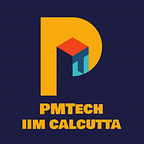Cloud and SaaS: What, Why & Differences
Cloud computing is the delivery of computing services — including servers, storage, databases, networking, software, analytics, and intelligence — over the Internet (“the cloud”) to offer faster innovation, flexible resources, and economies of scale. You typically pay only for cloud services you use, helping lower your operating costs, run your infrastructure more efficiently and scale as your business needs change.
Examples: Amazon Web Services (AWS), Microsoft Azure, Google Cloud Platform, etc.
Types of cloud computing
Not all clouds are the same and not one type of cloud computing is right for everyone. Several different models, types, and services have evolved to help offer the right solution for your needs.
First, you need to determine the type of cloud deployment or cloud computing architecture, that your cloud services will be implemented on. There are three different ways to deploy cloud services: on a public cloud, private cloud, or hybrid cloud.
Public cloud
Public clouds are owned and operated by third-party cloud service providers, which deliver their computing resources like servers and storage over the Internet. Microsoft Azure is an example of a public cloud. With a public cloud, all hardware, software, and other supporting infrastructure is owned and managed by the cloud provider. You access these services and manage your account using a web browser.
Private cloud
A private cloud refers to cloud computing resources used exclusively by a single business or organization. A private cloud can be physically located on the company’s on-site datacenter. Some companies also pay third-party service providers to host their private cloud. A private cloud is one in which the services and infrastructure are maintained on a private network.
Hybrid cloud
Hybrid clouds combine public and private clouds, bound together by technology that allows data and applications to be shared between them. By allowing data and applications to move between private and public clouds, a hybrid cloud gives your business greater flexibility, more deployment options and helps optimize your existing infrastructure, security, and compliance.
Types of cloud services: IaaS, PaaS, Serverless, and SaaS:
Most cloud computing services fall into four broad categories: infrastructure as a service (IaaS), platform as a service (PaaS), serverless, and software as a service (SaaS). These are sometimes called the cloud computing stack because they build on top of one another. Knowing what they are and how they are different makes it easier to accomplish your business goals.
Infrastructure as a service (IaaS)
The most basic category of cloud computing services. With IaaS, you rent IT infrastructure — servers and virtual machines (VMs), storage, networks, operating systems — from a cloud provider on a pay-as-you-go basis.
Platform as a service (PaaS)
Platform as a service refers to cloud computing services that supply an on-demand environment for developing, testing, delivering and managing software applications. PaaS is designed to make it easier for developers to quickly create web or mobile apps, without worrying about setting up or managing the underlying infrastructure of servers, storage, network and databases needed for development.
Serverless computing
Overlapping with PaaS, serverless computing focuses on building app functionality without spending time continually managing the servers and infrastructure required to do so. The cloud provider handles the setup, capacity planning and server management for you. Serverless architectures are highly scalable and event-driven, only using resources when a specific function or trigger occurs.
Software as a service (SaaS)
Software as a service is a method for delivering software applications over the Internet, on-demand and typically on a subscription basis. With SaaS, cloud providers host and manage the software application and underlying infrastructure and handle any maintenance, like software upgrades and security patching. Users connect to the application over the Internet, usually with a web browser on their phone, tablet or PC.
Software as a Service is a software licensing and delivery model in which software is licensed to a user. The software or application is accessed via the internet and a web browser. You do not need to install and maintain the software locally.
SaaS-based products have two key characteristics. The first characteristic is that the software is served directly to you, hosted, pre-configured and ready to go. With nothing to install, no hardware to purchase, no backups to worry about, this significantly lowers barriers to market entry. The application runs on the SaaS provider’s servers. The 3rd-party provider then is responsible for the security, performance, and maintenance of the application on their servers.
The second characteristic is that you do not own the software. With SaaS, you are purchasing a service, meaning you do not own the software you buy. SaaS applications are licensed on a subscription basis. You pay a monthly fee based on the level of service and number of users needed. In this way, a SaaS delivers and maintains its application to you over the internet, as a service.
“SaaS is a cloud software, but cloud software is not all SaaS.”
Essentially, SaaS is a subset of cloud computing. However, it is important to note that not all SaaS models are built-in the cloud. SaaS products or applications can be built on a local terminal and deployed to a cloud-based server. The product itself is accessed and utilized through a web browser.
Differences between Cloud and SaaS Services:
Advantages:
References:
Nimish Nama
IIM Calcutta ‘56
